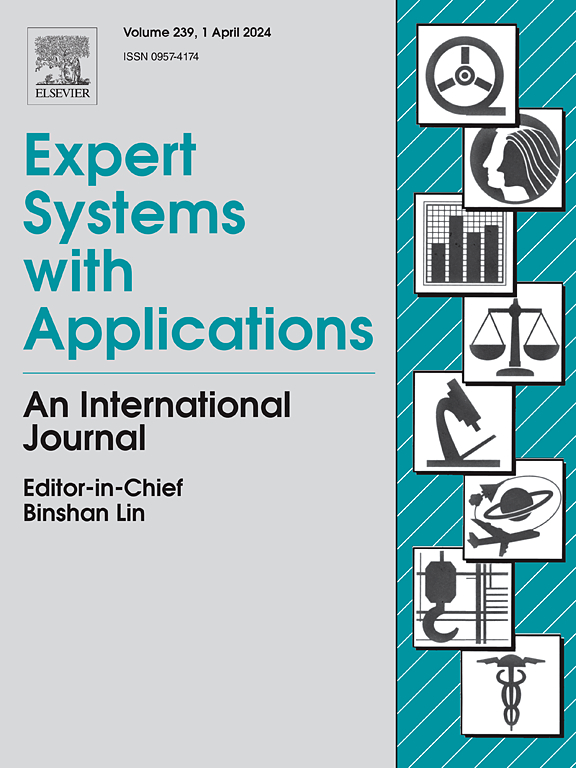使用堆叠双顾注意与 BERT 模型自动检测社交媒体上的网络欺凌行为
IF 7.5
1区 计算机科学
Q1 COMPUTER SCIENCE, ARTIFICIAL INTELLIGENCE
引用次数: 0
摘要
随着社交媒体使用的增加,网络欺凌行为引起了更多的关注。青少年自杀与网络欺凌有关,网络欺凌还对人的一生造成了其他严重有害影响。利用适当的自然语言处理和机器学习技术,可以主动识别欺凌内容,从而减少并最终消除网络欺凌。因此,文章提出了一种自动深度学习模型,用于检测网络欺凌中的攻击性活动。首先,使用 Formspring、Instagram 和 MySpace 数据集从社交媒体平台中提取数据,用于感知网络欺凌行为,然后将收集到的数据输入预处理。为了去除原始数据,引入了几个预处理过程。这些预处理包括删除停顿词、标点符号留白和将注释改为小写。词汇密度(LD)一直是用来衡量语言复杂性的指标之一。因此,本研究使用了特征密度(FD),利用语言支持的预处理模型来计算某些自然语言数据集的复杂程度。经过预处理后,数据被输入到特征选择流程,该流程会选择相关的特征或属性,并将其纳入预测建模中,而将其排除在外。因此,文章提出了基于二进制黑猩猩优化(BCO)的特征选择(BCO-FSS)技术,该技术可选择特征子集以提高分类性能。所选特征可用于网络欺凌行为检测。为了识别社交媒体中的网络欺凌文本内容,文章建议使用堆叠双向门控递归单元(SBiGRU)注意学习空间位置信息和顺序语义表征。此外,还采用 BERT 模型作为基础分类器,对文本内容中的攻击行为进行识别和分类。模拟使用了 Matlab 软件。在准确率、精确度、召回率和 F1-Score 方面,本实验取得了几乎完美的结果,数值分别为 99.12%、94.73%、97.45% 和 93.91%。本文章由计算机程序翻译,如有差异,请以英文原文为准。
Automatic detection of cyberbullying behaviour on social media using Stacked Bi-Gru attention with BERT model
Cyberbullying behaviour has drawn more attention as social media usage has grown. Teen suicide has been related to cyberbullying, among other serious and harmful effects on a person’s life. Using the appropriate natural language processing and machine learning techniques, it is possible to proactively identify bullying content to reduce and eventually eradicate cyberbullying. Accordingly, the article proposed an automated deep-learning model for detecting aggressive activity in cyberbullying. Initially, the data was extracted from the social media platform using Formspring, Instagram and MySpace datasets for perceiving cyberbullying behaviour, then the collected data are input for preprocessing. To remove the raw data, several preprocessing processes have been introduced. They consist of removing stop words, white spaces for punctuation, and changing the comments to lowercase. Lexical Density (LD) has been one of the metrics used to gauge language complexity generally. As a result, the study made use of the Feature Density (FD) to calculate how complicated certain natural language datasets are using the linguistically backed preprocessing model. After preprocessing, the data are input to the feature selection process which selects the pertinent features or attributes to include in predictive modelling and which to leave out. Since, the article proposed a Binary Chimp Optimization (BCO)-based Feature Selection (BCO-FSS) technique, which selects the subset of features for classification performance improvement. The selected features are exploited for cyberbullying behaviour detection. To identify the exploit of social media for cyberbullying text content, the article suggested Stacked Bidirectional Gated Recurrent Unit (SBiGRU) Attention for learning spatial location information and sequential semantic representations using a Bi-GRU. Additionally, the BERT model is employed as a base classifier to recognize and categorise aggressive behaviour in the textual content. The Matlab software is employed for simulation. For accuracy, precision, recall, and F1-Score, this experiment yielded a practically perfect outcome with values of 99.12%, 94.73%, 97.45%, and 93.91% respectively.
求助全文
通过发布文献求助,成功后即可免费获取论文全文。
去求助
来源期刊

Expert Systems with Applications
工程技术-工程:电子与电气
CiteScore
13.80
自引率
10.60%
发文量
2045
审稿时长
8.7 months
期刊介绍:
Expert Systems With Applications is an international journal dedicated to the exchange of information on expert and intelligent systems used globally in industry, government, and universities. The journal emphasizes original papers covering the design, development, testing, implementation, and management of these systems, offering practical guidelines. It spans various sectors such as finance, engineering, marketing, law, project management, information management, medicine, and more. The journal also welcomes papers on multi-agent systems, knowledge management, neural networks, knowledge discovery, data mining, and other related areas, excluding applications to military/defense systems.
 求助内容:
求助内容: 应助结果提醒方式:
应助结果提醒方式:


